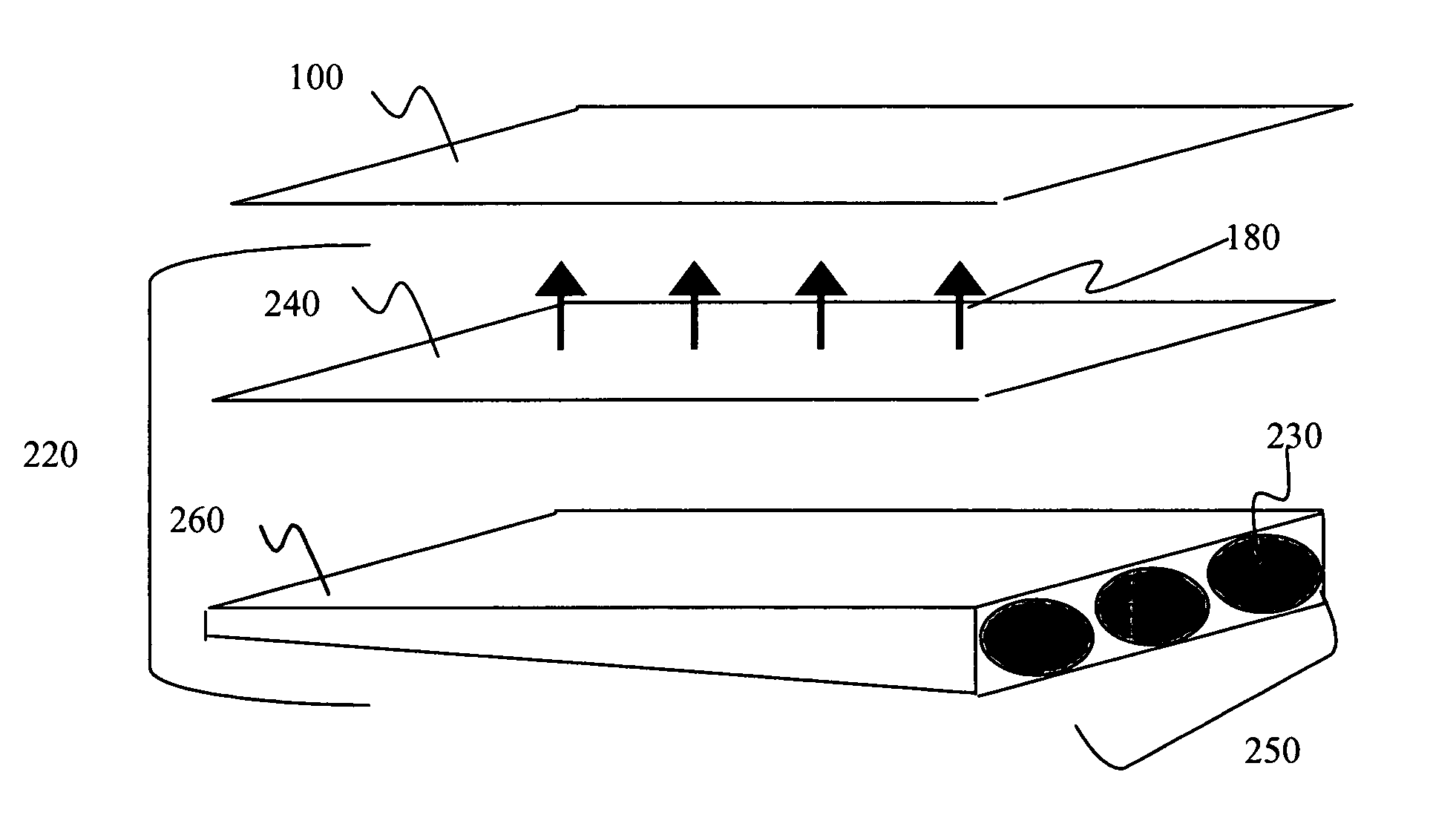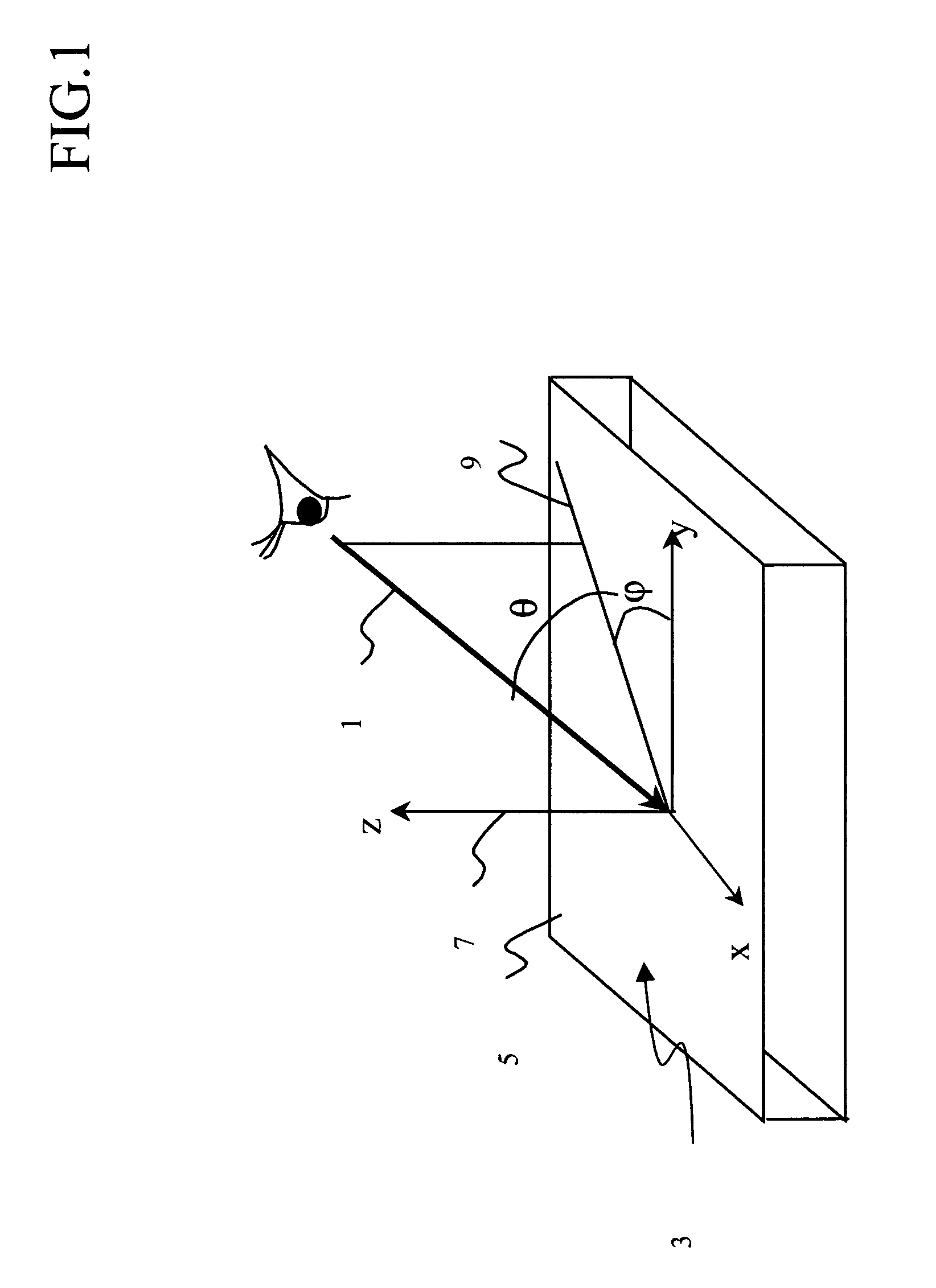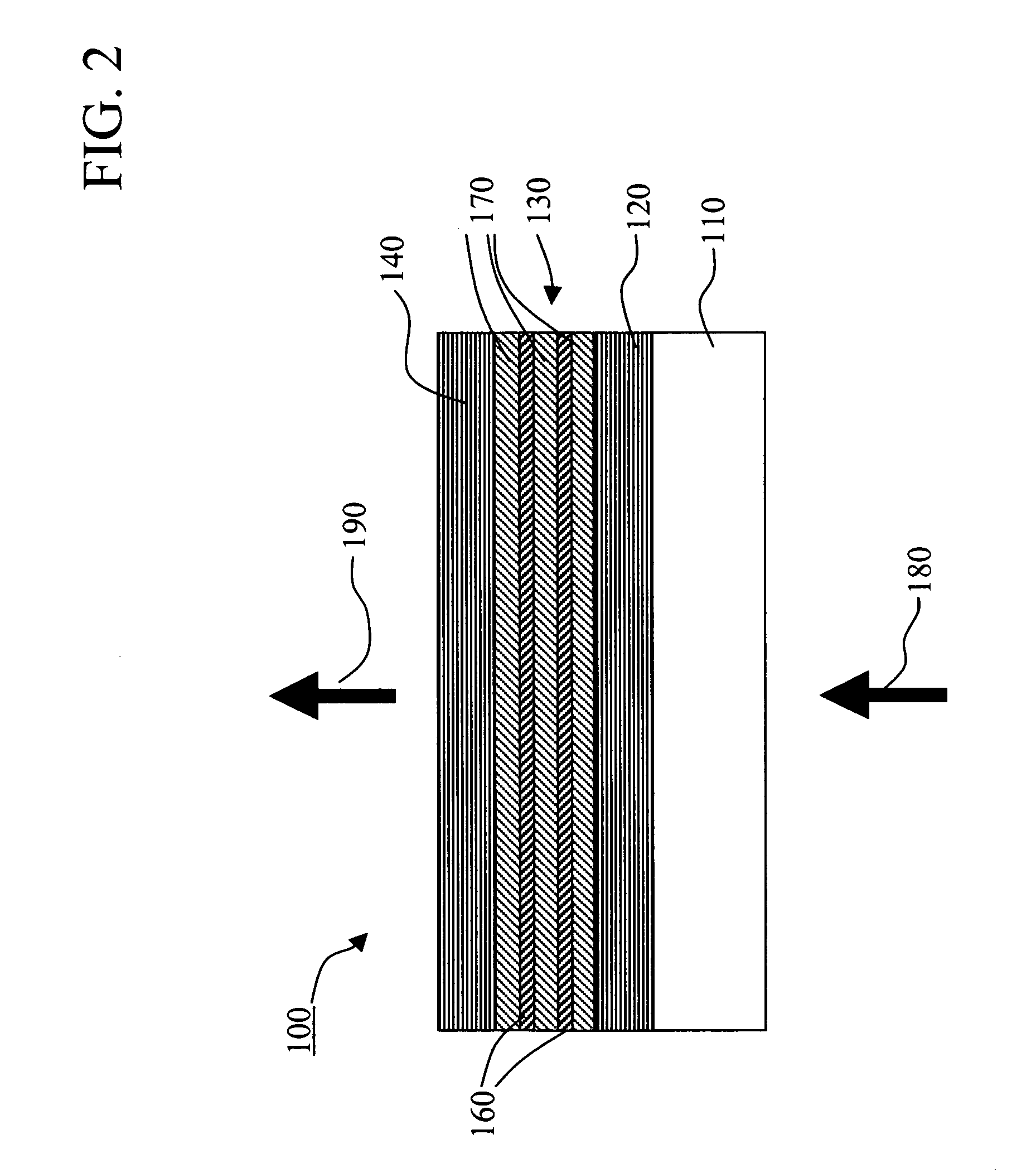Display device using vertical cavity laser arrays
a laser array and display device technology, applied in semiconductor lasers, active medium materials, instruments, etc., can solve the problems of loss of overall display efficiency, not all of the light of the undesired polarization is recycled, and not all of the recycled light exits, so as to enhance the color gamut of the liquid crystal display, reduce the divergence angle of outputted light, and enhance the viewing brightness on the axis
- Summary
- Abstract
- Description
- Claims
- Application Information
AI Technical Summary
Benefits of technology
Problems solved by technology
Method used
Image
Examples
Embodiment Construction
[0035] The invention is enabled by a light source that is both nearly collimated and spectrally narrow. In addition, the light source must contain red, green, and blue emitting elements from a common substrate whose size is on the scale of 80×240 μm. A light source that meets these criteria is a two-dimensional microcavity array device 100, as shown schematically in FIG. 2. FIG. 3 shows a top view of the microcavity array device 100 where on the surface of the microcavity device needs to be defined red, green, and blue (RGB) emitting elements 205. In order to produce red, green, and blue microcavity light from a common substrate, the active region 130 can be composed of organic-based gain media. In addition, recent research, R. N. Bhargava, Phys. Stat. Sol. 229, 897 (2002), points to the possibility of obtaining visible wavelength emission from inorganic-based nanoparticles. One possibility is ZnO nanoparticles (with preferred diameters less than 10 nm) either undoped or doped with ...
PUM
 Login to View More
Login to View More Abstract
Description
Claims
Application Information
 Login to View More
Login to View More - R&D
- Intellectual Property
- Life Sciences
- Materials
- Tech Scout
- Unparalleled Data Quality
- Higher Quality Content
- 60% Fewer Hallucinations
Browse by: Latest US Patents, China's latest patents, Technical Efficacy Thesaurus, Application Domain, Technology Topic, Popular Technical Reports.
© 2025 PatSnap. All rights reserved.Legal|Privacy policy|Modern Slavery Act Transparency Statement|Sitemap|About US| Contact US: help@patsnap.com



